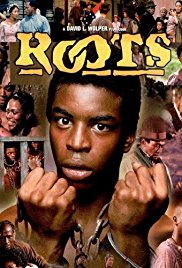ROOTS VOLUME III
SUBJECTS — U.S./1750 – 1812 & Diversity;
SOCIAL-EMOTIONAL LEARNING — Surviving;
MORAL-ETHICAL EMPHASIS — Respect.
AGE: 12+; Not Rated;
Drama; 1977; 90 minutes; Color. Available from Amazon.com.
There is NO AI content on this website. All content on TeachWithMovies.org has been written by human beings.

SUBJECTS — U.S./1750 – 1812 & Diversity;
SOCIAL-EMOTIONAL LEARNING — Surviving;
MORAL-ETHICAL EMPHASIS — Respect.
AGE: 12+; Not Rated;
Drama; 1977; 90 minutes; Color. Available from Amazon.com.
Give your students new perspectives on race relations, on the history of the American Revolution, and on the contribution of the Founding Fathers to the cause of representative democracy. Check out TWM’s Guide:
Movie Worksheets Here.
TWM offers the following movie worksheets to keep students’ minds on the film and to focus their attention on the lessons to be learned from the movie.
Film Study Worksheet for a Work of Historical Fiction;
Film Study Worksheet for ELA Classes; and
Worksheet for Cinematic and Theatrical Elements and Their Effects.
Teachers can modify the movie worksheets to fit the needs of each class. See also TWM’s Historical Fiction in Film Cross-Curricular Homework Project and Movies as Literature Homework Project.
Additional ideas for lesson plans for this movie can be found at TWM’s guide to Lesson Plans Using Film Adaptations of Novels, Short Stories or Plays.
Roots is a video presentation of Alex Haley’s Pulitzer Prize-winning book, Roots: The Saga of an American Family. Volume III shows the end of Kunta Kinte’s dream of escaping to freedom.
Selected Awards:
The “Roots” series won a Golden Globe Award as the Best Television Series of 1978, nine Emmy Awards, and many other honors.
Featured Actors:
John Amos, Lynda Day George, Louis Gossett, Jr. Loren Greene, Vic Maro, Robert Reed, Madge Sinclair.
Director:
Marvin J. Chompsky.
The series describes important aspects of the black experience in the U.S. and, for all Americans, helps in facing the legacies of slavery and segregation.
MINOR. There is some violence but it is appropriate to the film’s message.
Review the description of the “bargain with the devil” on slavery that was necessary to get the Southern states to join the American Revolution and to adopt the U.S. Constitution. See Learning Guide to “Roots, Volume I“. Describe this information to your child. Ask and help your child to answer the Quick Discussion Question and the Question on Morality and Ethics.
See the TWM student handout Slavery: A World-Wide View, Then and Now.
For a description of the “bargain with the devil” on slavery that was necessary to get the Southern states to join the American Revolution and to adopt the U.S. Constitution, see Learning Guide to “Roots, Volume I“.
1. Did Kunta Kinte do the right thing by having a child with Bell and giving up his dream of running away to freedom?
Discussion Questions Relating to Ethical Issues will facilitate the use of this film to teach ethical principles and critical viewing. Additional questions are set out below.
(Treat others with respect; follow the Golden Rule; Be tolerant of differences; Use good manners, not bad language; Be considerate of the feelings of others; Don’t threaten, hit or hurt anyone; Deal peacefully with anger, insults and disagreements)
1. Is it possible for a slave owner to act respectfully toward his or her slave?
Suggested Response:
No. The very nature of the slave/master relationship is for the owner to take advantage of the slave. The slave serves the owner without recompense. A good employer/employee relationship is much different. The employer pays for the work of the employee at a reasonable rate. An employer can also train an employee so that he can undertake new responsibilities, have a more satisfying job and make more money.
Older children who are good readers will enjoy the book Roots: The Saga of an American Family by Alex Haley. Books recommended for middles school and junior high readers include: To Be A Slave by Julius Lester, illustrated by Tom Feelings.
Bibliography Here.
This Learning Guide was last updated on July 21, 2011.

TWM offers the following movie worksheets to keep students’ minds on the film and to focus their attention on the lessons to be learned from the movie.
Film Study Worksheet for a Work of Historical Fiction;
Film Study Worksheet for ELA Classes; and
Worksheet for Cinematic and Theatrical Elements and Their Effects.
Teachers can modify the movie worksheets to fit the needs of each class. See also TWM’s Historical Fiction in Film Cross-Curricular Homework Project and Movies as Literature Homework Project.
Additional ideas for lesson plans for this movie can be found at TWM’s guide to Lesson Plans Using Film Adaptations of Novels, Short Stories or Plays.
“I say that the best way to address this issue is to address it forthrightly, and straightforwardly, and embrace the complicated history and the complicated presence of America. On the one hand, that’s right, slavery, and segregation, and racism, and white supremacy is deeply entrenched in America. At the same time, there has been a tremendous alternative tradition, a tradition against slavery, a tradition against segregation, a tradition against racism.
I mean, after all in the past 25 years, the United States of America has seen an African-American presence. As we speak, there is an African-American vice president. As we speak, there’s an African- American who is in charge of the Department of Defense. So we have a complicated situation. And I think the best way of addressing our race question is to just be straightforward, and be clear, and embrace the tensions, the contradictions, the complexities of race in American life. I think we need actually a new vocabulary.
So many of the terms we use, we use these terms over and over, starting with racism, structural racism, critical race theory. These words actually have been weaponized. They are vehicles for propaganda. I think we would be better off if we were more concrete, we talked about real problems, and we actually used a language that got us away from these overused terms that actually don’t mean that much. From Fahreed Zakaria, Global Public Square, CNN, December 26, 2021
Give your students new perspectives on race relations, on the history of the American Revolution, and on the contribution of the Founding Fathers to the cause of representative democracy. Check out TWM’s Guide: TWO CONTRASTING TRADITIONS RELATING TO RACISM IN AMERICA and a Tragic Irony of the American Revolution: the Sacrifice of Freedom for the African-American Slaves on the Altar of Representative Democracy.
* we respect your privacy. no spam here!